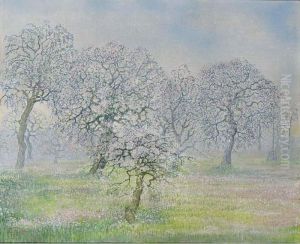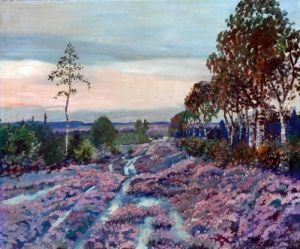Christiaan Johannes Lanooy Paintings
Christiaan Johannes (C.J.) Lanooy was a Dutch artist, renowned for his work in ceramics and glass. Born on January 16, 1881, in Sint-Annaland, Zeeland, Lanooy began his artistic journey at a young age. Initially trained as a painter, he later discovered his passion for ceramics, which would come to define his career.
Lanooy's artistic education took place at the Royal Academy of Art in The Hague, where he honed his skills in painting. However, around the turn of the century, he became interested in the applied arts, particularly the evolving field of ceramics. This interest led him to work at the Rozenburg pottery factory in The Hague, where he was exposed to the production of porcelain and earthenware, as well as the innovative glazing techniques that were gaining popularity during that period.
In 1907, Lanooy established his own studio in Epe, a rural area in the Netherlands. There, he began experimenting with glazes and shapes, pushing the boundaries of traditional ceramic art. His work was noted for its striking glaze effects, which included the use of flambe (flame) glazes that created lustrous, iridescent surfaces reminiscent of Chinese and Japanese ceramics. Lanooy's innovative techniques and vibrant use of color set his work apart, earning him recognition in the Netherlands and abroad.
Lanooy's career was marked by several significant exhibitions, including his participation in the 1913 Ghent World Fair, which helped to cement his reputation as a master ceramist. Despite his success, Lanooy remained dedicated to experimentation and continued to refine his craft throughout his life.
C.J. Lanooy's influence extended beyond his own studio as he shared his knowledge and techniques with other artists. He was a mentor to many, and his work helped to inspire a new generation of Dutch ceramists. His contributions to Dutch art were not limited to ceramics; he also worked with glass, creating stained glass windows that further showcased his artistic versatility.
Christiaan Johannes Lanooy passed away on August 24, 1948, leaving behind a legacy as a pivotal figure in Dutch ceramic art. His pieces are collected and admired to this day, and his innovative spirit continues to influence and inspire contemporary artists in the field of ceramics.

